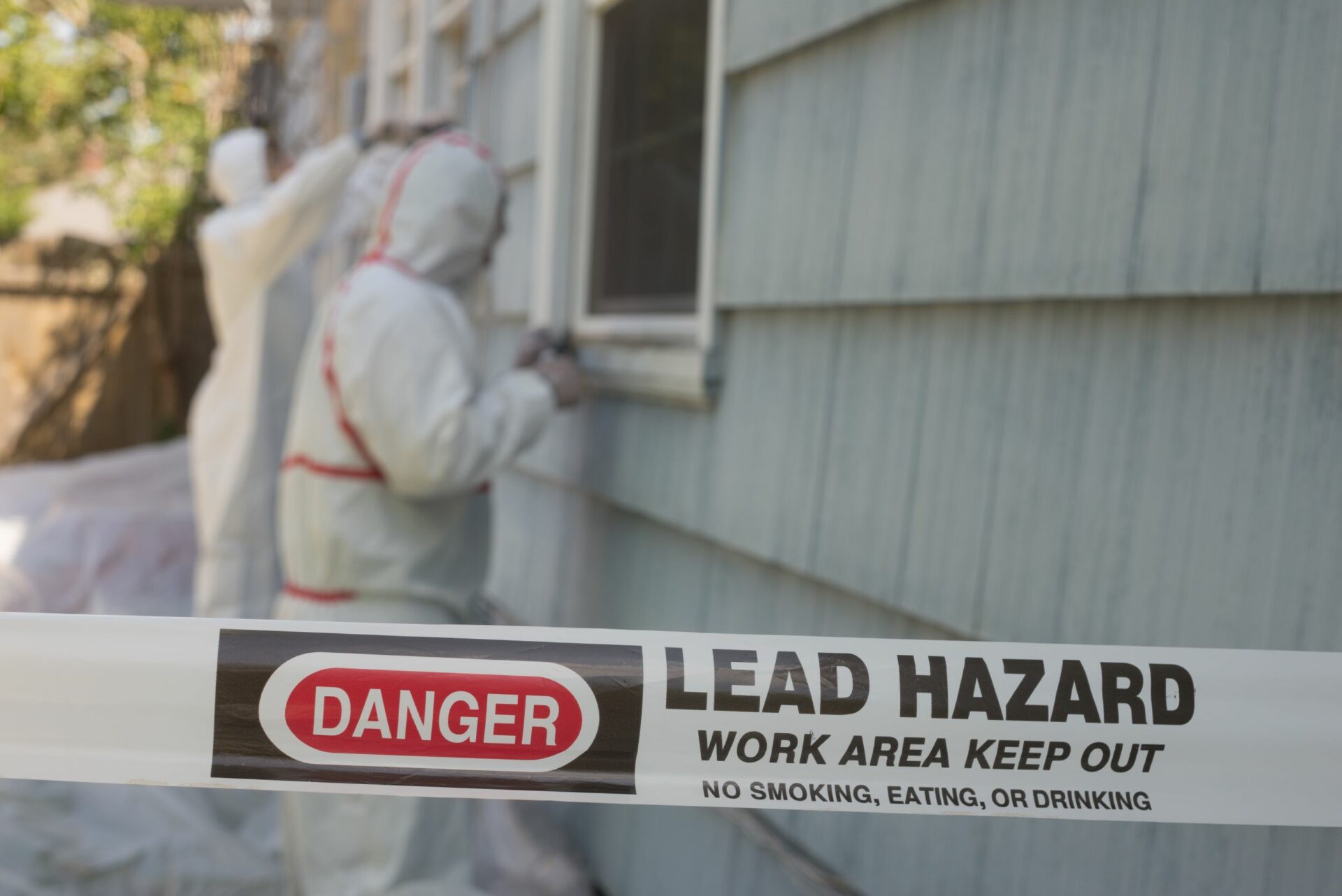Have you seen this requirement in your RAVS® section on your ISN® account? If so, it might be because your company is a lead abatement contractor. But more likely, it is because you selected a work-type which includes lead abatement / removal requirement by default. Either way, one or more of your hiring clients require your company to have the program in place.
Lead Abatement work is a little different than just working around lead and being aware of the dangers. Lead Abatement requires the elimination of the danger or hazards of lead from a specific area.
Lead abatement is an activity with the purpose of permanently eliminating lead-based paint hazards. The abatement can be ordered by a state or local government and can involve specialized techniques not typical of most contractors. The EPA requires individuals and firms who perform abatement projects to be certified and follow specific work practices.
- Lead-Based Paint Activities include lead-based paint inspections, risk assessments and abatements (lead-based paint removal).
- Lead abatement projects are designed to permanently eliminate existing lead-based paint hazards. They may be ordered by a state or local government or may be undertaken voluntarily at any time.
- Lead risk assessments are designed to identify lead hazards and management strategies, and lead inspections are designed to locate all lead-based paint in a home or building.
- Individuals must be trained and certified to conduct lead-based paint activities, and firms must be certified.
- Lead-based activities are regulated differently than renovation, repair and painting jobs, even though, in some cases, the activities are similar.
Pure lead (Pb) is a heavy metal at room temperature and pressure and is a basic chemical element. It can combine with various other substances to form numerous lead compounds.
The Permissible Exposure Limit (PEL) set by OSHA is 50 micrograms of lead per cubic meter of air (50 ug/m(3)), averaged over an 8-hour workday. No employee shall be exposed to more than 50 µg/m3 of air as a permissible exposure limit. Lead can be absorbed by inhalation (breathing) and ingestion (eating). Lead is not absorbed through your skin. When lead is scattered in the air as a dust, fume or mist it can be inhaled and absorbed through the lungs and upper respiratory tract. Lead can also be absorbed through the digestive system if swallowed. Lead is a potent, systemic poison. Taken in large enough doses, lead can kill in a matter of days. A condition affecting the brain called acute encephalopathy may arise which develops quickly to seizures, coma, and death from cardiorespiratory arrest. There is no sharp dividing line between rapidly developing acute effects of lead, and chronic effects which take longer to acquire. Lead adversely affects numerous body systems and causes forms of health impairment and disease which arise after periods of exposure as short as days or if several years.
As exposure to lead continues, the amount stored in the body will increase. Lead stored in body tissues can cause irreversible damage, first to individual cells, then to organs and whole-body systems.
Common symptoms of acute lead poisoning are loss of appetite, nausea, vomiting, stomach cramps, constipation, difficulty in sleeping, fatigue, moodiness, headache, joint or muscle aches, and anemia. Long term (chronic) overexposure to lead may result in severe damage to the blood-forming, nervous, urinary, and reproductive systems.
Chronic overexposure to lead may result in severe damage to blood-forming, nervous, urinary, and reproductive systems.
Some common symptoms of chronic overexposure include loss of appetite, metallic taste in the mouth, anxiety, constipation, nausea, pallor, excessive tiredness, weakness, insomnia, headache, nervous irritability, muscle and joint pain or soreness, fine tremors, numbness, dizziness, hyperactivity, and colic. In lead colic there may be severe abdominal pain.
When working on a job site with potential exposure to lead, it is important to take the proper precautions:
- Use proper personal protective equipment (gloves, clothing, and approved respirators)
- Wash hands and face after work and before eating
- Never enter eating areas wearing protective equipment
- Never wear clothes and shoes that were worn during lead exposure away from work
- Launder clothing daily; use proper cleaning methods
- Be alert to symptoms of lead exposure (severe abdominal pain, headaches, loss of motor coordination)
Personal Protective Equipment
Appropriate protective work clothing and equipment may include:
- Coveralls or other full-body work clothing
- Gloves, hats, and shoes or disposable shoe coverlets
- Vented goggles or face shields with protective spectacles or goggles
- Welding or abrasive blasting helmets
- Respirator
Respirators are common PPE when working with Lead. Respirators must be used during:
- Periods necessary to install or implement engineering or work-practice controls
- Work operations for which engineering, and work-practice controls are not sufficient to reduce employee exposures to or below the permissible exposure limit
- In emergencies
- Periods when an employee requests a respirator
Over exposure to lead can be prevented by knowing how exposure occurs and how to prevent it. With good worker hygiene, housekeeping practices, and protective clothing you and even your family can stay safe from lead exposure.
Always follow your company’s policies and procedures.
If you need help developing a safety policy, or implementing a training program, give us a call.
Call 866-627-3850 or email us at sales@jjsafetyllc.com to learn more.
